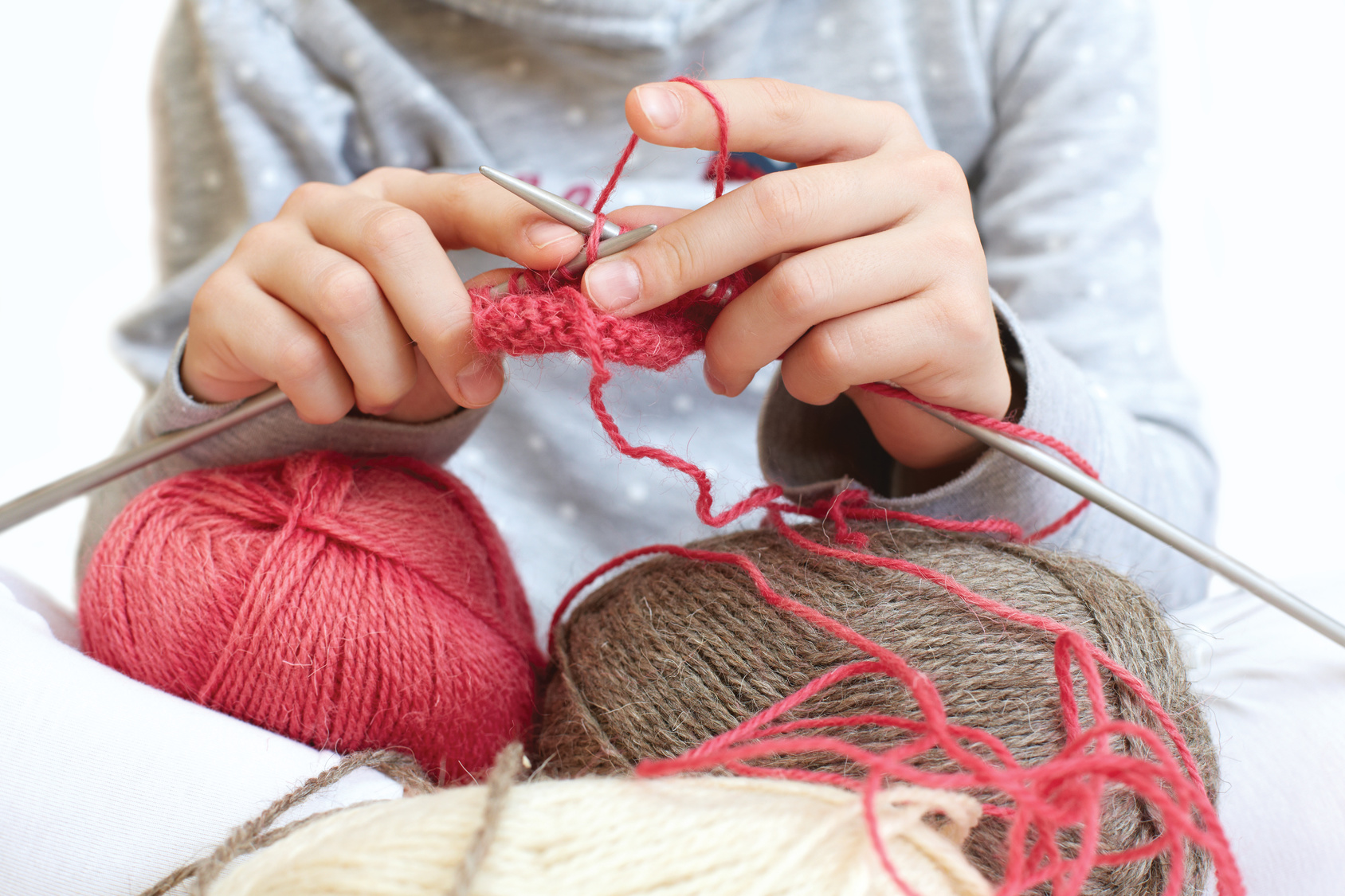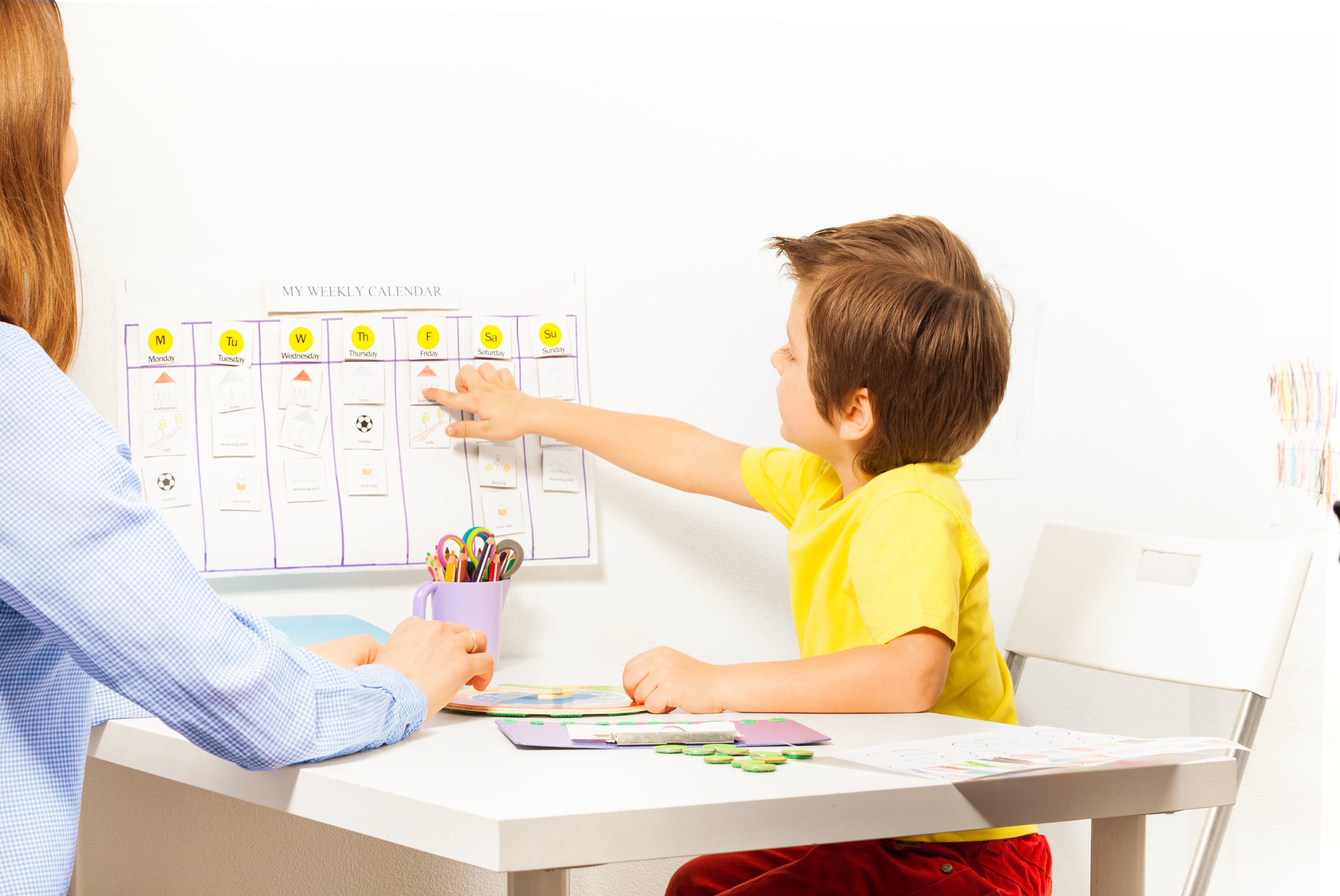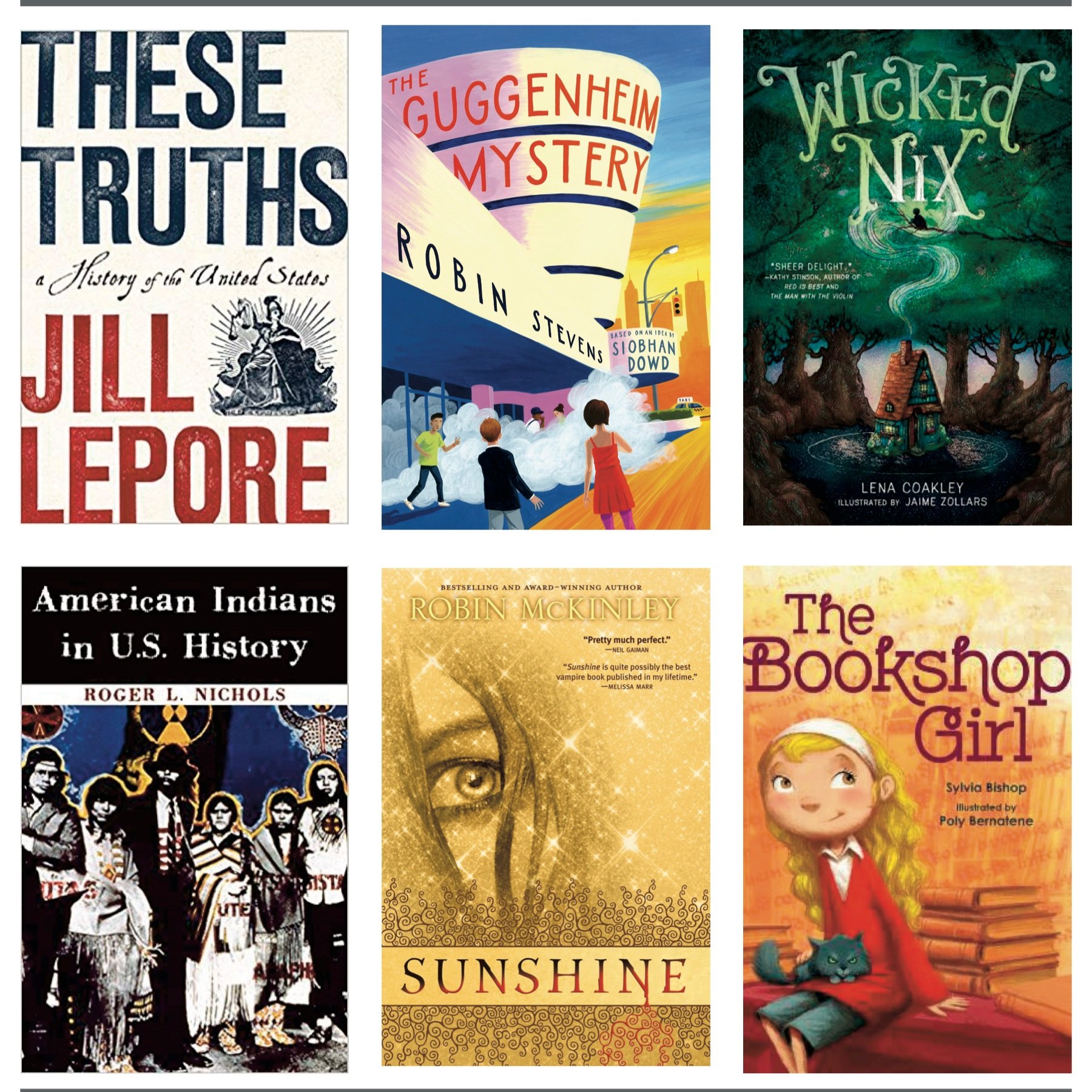Planning to Go Back to Work When You’re Done Homeschooling? Here's What You Should Know
If you’re planning to return to work when your homeschooling days are done, now — right now — is the time to start getting ready for career reentry.
If you’re planning to return to work when your homeschooling days are done, now—right now—is the time to start getting ready for career reentry
It’s the thing we all dread: That moment in the future, in two years or ten years or twenty years, when we have to sit down in front of a computer and try to figure out how to fit a decade-plus of homeschooling into our resume.
Whatever your reasons for returning to the world of work, you couldn’t have picked a less hospitable time. Moms returning to the workforce have never had it easy — a Cornell University study found that just being a mom makes you half as likely to get called for an interview than your single peers. And now, with the economic downturn and high levels of unemployment, you’re going to be competing for jobs with other unemployed people who have more current experience than you do. How, then, can a mama with a hefty, homeschool-size gap in her resume, track down a gig in this competitive climate? The key is to start preparing for your job hunt right now, well before you’re actually in the market for a new job. Homeschooling has probably helped you hone and develop all kinds of new skills, but you will have to help companies understand your value — and to do that, you’ll need to speak a language that they understand. Here’s how to set the wheels in motion for your return to the working world.
Revisit your options.
If you’ve been out of the workforce for a while, consider whether the work you left is the work you want to return to. The degree you earned two decades ago may no longer be the right fit, and making the switch to a career you’re genuinely excited about can be liberating. Not sure where your career passions lie? Think about what people always compliment you on, suggests Whitney Johnson, author of Dare, Dream, Do. That could point you toward your next career act.
Plug back in to your field.
Knowing the buzz on issues and current players in your field keeps you from seeming like an out-of-touch, out-of-the- game applicant. make a point to get back up to speed by subscribing to a major newspaper, such as The New York Times or the Wall Street Journal, and any go-to journals in your field. (Bonus: This kind of reading can inspire all kinds of fun homeschool connections.)
Reconnect to your professional network.
Ideally, you’d still be in touch with old bosses and coworkers, but realistically, you’ve probably been too swamped to even think about people you once worked with. That’s okay. You can start rebuilding your network now by reaching out to old work connections (Linkedin and other social media is great for this — you can reach out without feeling as awkward as you might about a phone call or email) and considering who your new connections might be: the photographer who shoots your co-op yearbook? The marketing director at the animal shelter where you volunteer? Establish your new network, and make a point of reaching out to the people in it every few months. When you’re ready to start job-hunting, your network will already be in place.
Make the most of volunteer time.
Volunteer work works for your resume. so be strategic with volunteer efforts, and look for opportunities that will grow your resume in the direction you want it to go — whether you’re writing a monthly newsletter, soliciting community donations, or planning a donor party, community service can boost your resume with current skills. Most career counselors advise not putting “homeschool mom” on your resume, but that doesn’t mean you can’t include volunteer projects you tackled while being a homeschool mom. Running a co-op or teaching a weekly science class for three years running is absolutely resume-worthy.
Homeschool Moms: Stop Feeling Guilty All the Time
You can't do everything, be everything, buy everything — nobody can. So why do homeschool moms feel so guilty about it?
You can't do everything, be everything, buy everything — nobody can. So why do homeschool moms feel so guilty about it?
Most of us aren’t thinking about guilt when we talk about having it all, but guilt plays a larger-than-we’d-like part in most of our lives. As if it’s not hard enough trying to balance homeschooling, parenting, housework, work responsibilities, and, you know, life, now we’ve got to do it all with Facebook and Pinterest showing us exactly how much better everyone else is at managing all those things than we are, says Gail Sullivan, M.D., a New York-based psychiatrist. A side of guilt seems like an inevitable part of homeschool life since we can never do everything all the time.
But guilt isn’t harmless. Too much guilt, and we have trouble thinking clearly, concentrating, and performing daily tasks. (Don’t even get me started on all the sleep problems caused by excessive guilt build-up.) And all those little twinges of guilt add up faster than you might think — most women are spending at least a couple of hours every week feeling guilty, says psychologist and author Kathrynn Horne.
Where does all this guilt come from? Well, there’s a good chance that some of it is educational guilt. However confident we are in our choice to homeschool, most of us occasionally face the nagging worry that our first-grader will never learn how to read or our high school sophomore will never get into college. Then there’s the classic mom guilt, that persistent feeling that we’re doing too much or not enough for our kids. Social guilt kicks in when we have to deal with letting down other people, whether it’s saying no to a volunteer project (it really would be great to have a co-op newsletter…) or a friend request on Facebook. And finally, there’s individual guilt — often the toughest guilt to shake because it occurs when we feel like we’re not living up to our own expectations for ourselves.
No matter what the source of your guilt, here’s how to send it packing:
Understand why.
Thinking about things that make us feel guilty can be hard, but it’s important to identify the real reason why something is making you feel guilty. For instance, lots of people feel guilty about skipping their kids’ favorite park day, but your friend might feel guilty because she thinks her kids don’t get enough active play time while your guilt may stem from worries about other people’s questions about your homeschoolers’ socialization. Knowing why something is triggering your guilt reaction is the first step toward getting over it.
Address the issue.
Whenever you feel a pang of guilt, ask yourself whether your guilt is a one-off or a continuing theme. If you skipped out on math for a week because you just needed a break but you’ve been vigilant about making forward progress in math over the past couple of years, there’s really no reason to feel guilty — everyone needs a break now and again. On the other hand, if you’re always feeling guilty about screen time or missing your workout, you need to adjust your habits or your priorities to better reflect what matters to you.
Be your own best friend.
What would you tell a close pal who was feeling guilty about the thing that’s stressing you out? You’d probably be a lot kinder to her than you are to yourself: “A couple of drive-thru dinners aren’t going to permanently destroy your kids’ eating habits,” you might say, or “They’ll find someone else to do the co-op newsletter this year—you can’t do everything.” Give yourself the same grace and emotional support you’d give a friend, and it will go a long way toward loosening your guilt trip’s hold on you.
7 THINGS YOU SHOULD NEVER FEEL GUILTY ABOUT
Secular homeschool moms, we give you permission to never feel guilty about the following:
Saying “no” to a field trip/volunteer project/new curriculum/book club/anything you just don’t want to do.
Hiding from your kids in the bathroom. Everybody needs a break sometimes, and there’s no shame in taking it where you can.
Not checking your email. Or your Facebook messages. Or your phone. You’re allowed to unplug for a day.
Having a movie marathon and calling it school. Maybe you wouldn’t want to do it every day, but even professional teachers break out the DVD player sometimes.
Your life choices. You made them. They work for your family. You don’t have to justify or excuse them to anyone.
Ignoring a friend request. You’re not socially obligated to respond to every possible Facebook connection.
Not knowing the answer. Come on, finding out is the fun part.
Keeping it Real: The Importance of Authenticity in Your Child’s Writing Life
If you want your students to care about writing, give them writing projects that actually matter.
If you want your students to care about writing, give them writing projects that actually matter.
Parents, I have an assignment for you. I want you to plan out a week’s worth of meals for your family, taking into account each family member’s likes and dislikes. Write out the grocery list, and be careful, because I’ll be checking to see that you didn’t forget anything and nothing is misspelled. When you’re finished, just file it away somewhere. We were never going to actually shop for the meals or cook the meals. I just wanted to see if you could do the assignment.
Any takers?... No? I don’t blame you.
Many kids feel the same way when they’re made to write without an audience beyond the assigning adult on the receiving end of their work. That’s why we need to seek out opportunities for authentic writing for our young writers. Authentic writing refers to writing that is done for a real purpose and for a real audience. Authentic writing is intrinsically motivating and helps to provide kids with a sense of the potential power of having strong writing skills.
Here are five suggestions for adding some authenticity to your homeschool’s writing program:
1. Do Business.
Have your student write a letter or email to a business. The content can either be full of praise for a job well done or dismay at a poor experience. This is a great time to talk about tone and professionalism. One of the best things about this assignment is that more often than not, kids receive replies to their missives. When I’ve done business letter assignments with classes before, students have even received autographed photos, coupons, and letters signed by CEOs. Talk about gratifying!
2. Review.
Amazon, Yelp, Google, and Rainbow Resource are just a few of the abundant opportunities online for leaving reviews that will be read by a wide audience. Use the existing reviews rated as “most helpful” as mentor texts to help your student draw conclusions about what makes a good review.
3. Blog.
Whatever your young writer chooses as the focus of his or her blog, it’s a great opportunity to share something with friends and family.
4. Slam or Snap.
Book clubs aren’t the only literary reason to gather people together. Consider hosting a poetry café or poetry slam with other homeschooling friends. Everybody gets to share an original poem.
5. Serve.
Can you find a way to serve your community via writing? You might consider teaming up with a local nursing home or assisted living community to record the life experiences of elderly people. Kids stand to learn so much from seniors who have experienced the history they’re learning about, and families will no doubt be grateful to receive a written record of their loved ones’ stories.
The Lazy Homeschool Parent’s Guide to Holiday Cheer
It’s okay to scale way back if Pinterest-perfect holidays are making you stress more than you celebrate.
It’s okay to scale way back if Pinterest-perfect holidays are making you stress more than you celebrate.
Okay, let’s be clear: I’m not calling you lazy. You’re a mom or a dad, and I know you work hard every day, and I do, too. The fact is, when I see the effort so many families put into their holiday preparations on top of everything else they have to do, I feel lazy. Or maybe the more honest way to put it is I don’t want to do all that.
In my house, we celebrate Christmas, and I love Christmas. I love the decorations and twinkling lights, and I love the spirit of the season, but I hate doing the decorating, and I especially hate putting it all away at the end of the season. I’m not a crafty person, and I’m not a great cook either. So it’s easy to let myself feel more pressure than holiday cheer.
I hope I’m not alone and there are a few other moms out there that feel the same way. If there are, I put this list together with you in mind, but please consider it simply a brainstorm on some possible ways to make the holidays less stressful. If you have better ideas, go with that!
Do what you want to do and know that’s enough. Your kids want a cheerful mom this holiday season, not a stressed mom. So make a list of the things you enjoy doing during the holiday season, stick to that, and stop feeling like you need to do more.
Don’t look at Pinterest. Just don’t even go there. If you feel like you can go there and make it out alive, then okay, but don’t go there, if you know it’s not good for you.
Take the pressure off making Christmas cards this year by picking the most recent, doable snapshot of your kids, and using a template at your favorite card maker. You don’t have to have a designer look every year. No one will remember it by next year anyway.
If your kids like crafts, the easiest craft is making snowflakes. You can use them for ornaments or hang them from doorways. They’ll really brighten up your house. Here’s a good tutorial for making snowflakes.
Turn on some holiday music. Music does wonders for the soul, and it’s sure to put everyone into the holiday spirit. And it’s as easy as plugging your iPod into some speakers.
When it’s time to decorate, pull all those boxes out of the attic, open them, and tell the kids to have fun. Even if things aren’t exactly “properly placed,” you’ll have fun seeing what they come up with, it’ll make a great memory, and it takes the pressure off of you.
Cooking is not my favorite pastime, but my kids enjoy helping me bake. Instead of feeling like I have to bake lots of items for gifts, I pick one or two treats to do with my kids and that’s it.
I’m also not a crafty person. Hearing about all the families who make their gifts for each other makes me feel a bit guilty, but that’s just not me, and it doesn’t have to be you either, if you aren’t into it. So remember that giving with your heart doesn’t have to equal giving with your hands.
Play games. The purpose of the holiday season is to spend more time with loved ones, right? Pull out some games and have fun together!
Get outside. Bundle up and spend some time in nature. It’s a great way to spend time together and studies show that it’s great for lowering your stress levels, which most people need this time of year!
What do you do to simplify the holiday season?
You Shouldn’t Compare Your Homeschool to Anyone Else’s
Homeschooling isn’t a competition — so why do we feel so compelled to compare our kids to other homeschoolers and traditionally schooled kids? (Hint: It’s probably more about us than about them.)
Remember that old adage, comparison is the thief of joy? We’ve all heard it. Heck, we may have even used that line on our own children at time or two.
Yet, have you ever thought to yourself in regards to homeschooling: Am I doing enough? Are my kids going to be okay? Have you ever heard an offhand comment by a schooled friend, or even another homeschooler, and thought to yourself: Oh my goodness, my child hasn’t learned that! I am not doing enough! I’m betting you have had those thoughts; I’ve been around the block enough to know that most homeschoolers feel like that at one time or another.
The why is obvious when we stop and think about it: we are so in the thick of it. We are so daily confronted, obviously and nakedly, by a struggling reader or a child who has yet to grasp simple algebra. And when the fear and self-doubt start to seep in, it’s easy to ask ourselves, and really mean it: Can I fix this? Am I up to this task?
And then, accompanying those nagging fears, are those Neighbor McPerfect types. Their children all play soccer, receive perfect grades, and every one of those little buggars takes part in academic summer enrichment activities; and no one at their house seems much worried about hitting certain benchmarks by a certain time because they all surpassed the benchmarks earlier than anyone else in their class. Their children are all college bound, not because it’s where they necessarily belong, but because it is the next rung on the ladder of how to do life. There is a neat, tidy bow wrapped so perfectly around their lives that it almost makes you want to weep with feelings of inadequacy.
Yes, ’tis true, comparison is the thief of joy.
Take a breath and pause for a minute. Why do you homeschool? Take some time— a lot of it if it’s needed— and remind yourself what you’re about.
Of course our homeschooled kids aren’t exact replicas of their schooled peers. Call me crazy, but isn’t that pretty much exactly why we do this? In all honestly, if we cared about following the traditional formula of doing life right, our kids wouldn’t have come home from a traditional school in the first place. No, they’d be in school. Where, I might add, our struggling reader would still be struggling to read, but instead of receiving one-on-one, positive attention in a place where it’s safe to fail, she would likely struggle to hide her perceived inadequacies from her peers.
That kid that just isn’t getting algebra? They’d not be understanding it in school either, and unlike at school, at home you have the option to change the approach you’re using, or buy a different curriculum. You can even shut the algebra book for a bit knowing that when you come back to it, your child’s brain will likely be ready to make sense of what was confusing before.
So why do we compare ourselves (or, let’s be honest, our kids) to our (their) peers? Why do we let ourselves feel so very badly that the very outcomes we wanted (independent thinkers! individualized learning!) are the outcomes we get?
The reality is we all maybe kind of want to parent that child that wins the national spelling bee. That child so very obviously excels at something, and it is so easy to defend homeschooling and demonstrate its efficacy. But the child who struggles to read in third grade? Has homeschooling failed her? On our worst days we maybe kind of believe that it might have.
What if, though, instead of examining the minutia of our homeschooling successes and failures, we instead examined what we are all climbing toward? Schools don’t have a monopoly on getting it right. So what if your local public school requires memorization of multiplication factors in third grade? If your gaze is focused on your academic end goals, you might more clearly see that a love of math is more important long term to the child you see mathematical promise in than getting those times tables memorized at the assigned time. A focus that has its sites set on the academic finish line might more clearly see the value in a child forgetting to do her geometry lesson because she was so wrapped up with her charcoal pencils and her sketchbook. Why is it worse to learn basic geography solely through computer games while never picking up a geography text? Is the knowledge less real because it wasn’t absorbed through textbook and lecture?
It’s not that the way schools do things is necessarily wrong. For many kids those ways work well, and we, like so many of you, do use a lot of traditional things in our homeschool. But my point is this: please don’t allow yourself to get bogged down in the mire. Every parent experiences self-doubt when it comes to their kids, even the ones who are doing it the traditional way. Second-guessing ourselves just means we care about the outcome; it doesn’t validate our doubts.
If you simply must compare a child to someone, compare him against himself. Can he do more today than he could yesterday? Is she an inquisitive soul who last year knew more than you ever imagined a person could know about every dog breed on the planet, and yet continues to learn more in her free time? Can your struggling reader read more today than yesterday? When comparing by those metrics, which are the only ones that matter, there is no joy stealing from the comparison. In fact, I would wager that by those measurements, your child looks pretty darn good, just as they ought.
Comparison can be the thief of joy. . . but only if you let it. I hope you won’t.
Homeschool Makeover: How Can I Make Our Homeschool Less School-y?
Jenn’s been struggling to find a balance between the structure and academics she needs and the fun, laidback vibe she wants her homeschool to have.
Jenn’s been struggling to find a balance between the structure and academics she needs and the fun, laidback vibe she wants her homeschool to have. We help her make some adjustments to make her homeschool more relaxed.
“I love the idea of unschooling, but I’m never going to be an unschooler,” says Jennifer Harris. Jenn homeschools her 9-year-old son Ian in a style that she calls Charlotte Mason-ish—“but lately, it’s feeling like all workbooks and dictation and sitting-at-the-desk time, which is too far in the other direction,” Jenn says.
We asked Jenn to track her time over a couple of weeks so that we could get a clearer idea of what a typical day in her homeschool looked like. Jenn was surprised to discover that she and Ian usually spent about two hours a day on school time—“it feels like so much more,” Jenn says. On most days, they’d start school after breakfast, then sit down together at the table to work. Sometimes Ian would read independently, sometimes Jenn would read aloud, but they’d stay at the table, working their way through one subject at a time, until it was time to start lunch. Jenn’s husband, Frank, comes home for lunch every day, so she and Ian hurry to get the table cleaned up and lunch prepared so that they can all enjoy the meal together.
“It’s gotten to the point where school feels like work to both of us,” says Jenn. “I care about staying on top of things academically, but I hate the way our learning process is starting to feel like a job. Is there a way to bring back fun without sacrificing academics?”
The PLAN
Since it was pretty clear that Jenn wasn’t overdoing it time-wise — two to three hours is a reasonable amount of hands-on school time for a third-grader — we decided to focus on the way she was using her time. By spending all their school time at the table and keeping an eye on the clock ticking toward a lunchtime deadline, Jenn and Ian weren’t able to relax into their routine. Here’s how we changed things up:
Moving classes to the afternoon. When I asked Jenn why they were doing all their school work before lunch, she paused and said, “You know what? I don’t even know.” It turns out that afternoons are quiet at the Harris house. Except for a regular Friday park day, Jenn and Ian are hanging out at home in the afternoons. We suggested moving their second hour of school time to the afternoon to make the morning more relaxed. Instead of jumping into their next lesson after handwriting, Ian starts his independent reading and Jenn gets household stuff out of the way until it’s time to prep lunch.
Starting the day with a meeting at the table. Jenn felt like table time was essential to starting their homeschool day. “I need the structure of sitting down in a consistent spot every day and saying okay, now we’re homeschooling,” Jenn says. We suggested that Jenn keep doing this — but instead of spending an entire morning at the table, she and Ian could get the same down-to-business boost from a morning meeting there right after breakfast. While they’re at the table, Ian does his daily copy work and handwriting practice.
Relocate for different subjects. The kitchen table is the best place for Ian to practice handwriting, but his other subjects might benefit from a change of scene. We suggested that Jenn and Ian switch locations each time they move to a new subject: math on the patio, history on the couch, spelling at the desk in Ian’s room, etc. This kind of musical chairs isn’t just a way to transition between subjects—researchers have discovered that students who work on material in different places retain it better than those who sit in the same spot to study every day.
Integrate more reading aloud. Ian’s a strong reader, and Jenn’s been encouraging him to do more independent reading, but since readalouds are one of the things Jenn and Ian like best about homeschooling, we suggested that they bring back the readaloud. (Kids benefit from being read to long after they’re able to finish chapter books on their own, and reading together means you get to learn together—which is one of the best ways to feel like your homeschool is a fun, relaxed place.) We suggested that Jenn and Ian go back to doing book-based subjects, including history and science, as readalouds and letting Ian keep his reading skills sharp with independent reading.
The results
“I didn’t realize such simple changes could make such a big difference, but they really have,” Jenn says when we follow up with her. She and Ian have been implementing their new routine over the past month, and Jenn says everything is working better than she had hoped.
“I think I bought into the idea that when we hit third grade, school should become more school-like,” Jenn says. “And the result was that Ian was learning about the same amount but we were having a lot less fun. I think I needed someone to say ‘Hey, you can teach your kid what he needs to know and still have fun doing it.’”
This column is excerpted from the summer 2016 issue of HSL. Do you need a homeschool makeover? Email us at hello@homeschoollifemag.com with a description of what’s tripping up your homeschool life, and we may feature your makeover in an upcoming issue.
How Do You Cope When Life Interrupts Your Homeschool?
When the going gets tough, how do you juggle life and homeschooling?
Sometimes life gets in the way of homeschooling — and that’s the way it has to be because homeschooling is part of your life.
This year has been crazy — my mother-in-law was diagnosed with cancer, we had to move unexpectedly, and my husband broke his ankle playing soccer with the kids. To say that homeschooling has gotten short shrift would be a major understatement, and things don’t look to be settling back to normal any time soon. How do you handle homeschooling when life keeps getting in the way?
I’m so sorry you’ve got so much on your plate right now. Maybe it helps a little to know that even though you might sometimes feel like the world’s worst homeschooling parent, everything is going to be okay. Sometimes life gets in the way of homeschooling — and that’s the way it has to be because homeschooling is part of your life.
You don’t say how old your kids are, but if they haven’t started high school yet, give yourself permission to unschool for a while. Instead of trying to make new schedules and hunt for easier-to-use curriculum materials, just stock up on open-ended activities, like math games, puzzle books, art supplies, readalouds, building materials, etc. Have what we call “do something” time each day — kids can choose from a variety of activities you’ve decided on together, and that counts as your school time. They may reread the Harry Potter series, draw a series of still life pictures, or watch math videos on Khan Academy. During this time, be as present as you can be. When you have a lot to deal with, it’s easy to fall into the trap of checking your phone or your email all the time, but try to set aside short blocks of time where you’re just focused on being with your kids. For your own sanity, don’t try to make this active teaching time — just be with them, whether you’re reading together or playing Uno.
If your student is in high school and missing time could affect his transcript, talk about it. He may be fine with adding some lesson time to his summers or waiting an extra year to graduate — neither of which is a big deal. If he’s worried about falling behind, consider signing him up for a semester of online classes. It may not be the first choice for either of you, but if he wants to stay on schedule, it’s a straightforward way to do it.
Check in with yourself regularly to make sure that homeschooling still makes sense for your family. Sending the kids back to school — for a while or for good — isn’t a homeschool failure; sometimes it’s the thing that makes the most sense for your family’s life. It sounds like a lot of your life disruptions will settle down with time, but if you can’t foresee a time or event that would stabilize your everyday life, you might want to consider your options beyond hands-on homeschooling.
Above all, don’t feel guilty. Try to think about how you’d like your children to handle stress, setbacks, and unexpected problems in their own lives, and try to model that behavior. You’d probably want them to take good care of themselves and keep their focus on doing the best they can without beating themselves up about the places where they fall short. Sometimes, following our own advice is the smartest thing we can do.
This Q&A was originally published in the summer 2016 issue of HSL.
How Can I Help My Homeschooler with Test Anxiety?
Testing isn't the most important thing — but when testing creates a lot of stress for your student, a few practical strategies might help him get more comfortable with the process.
It may seem counterintuitive, but one of the best ways to help a test-stressed kid is to give them more opportunities to take tests.
Our state’s homeschool laws are pretty relaxed, but we do have to do a standardized test every three years. This was our first year, and my son had terrible text anxiety — he broke down in tears during the test and couldn’t finish it, and he was upset about it for days. Obviously I want this to go better next time. How can I help him with his text anxiety?
It’s hard to blame anyone for feeling nervous about a test — choosing the right answers from a list of possibilities with a timer ticking in the background is a classic stress scenario. But since most kids will run into a situation where their performance on a test matters — because of homeschool laws, college admissions, or something else — it makes sense to minimize anxiety as much as you can.
One of the best ways to do this is to make testing part of your routine. Even if you’re not required to test every year, having a week of testing on the schedule every year can help a test-anxious kid start to get used to the testing process. Consider starting very slowly, by giving your son one or two test-style questions a week and gradually increasing the number of questions over time. If it’s the timing that stresses him out, let him practice answering a question with a five-minute time limit and gradually reduce the time so that he’s answering questions more quickly. Testing is a learned skill, and like any skill, it takes practice and patience to develop.
Kids with test anxiety also benefit from familiarity with the test style and format. Homeschoolers, especially, aren’t always accustomed to answering A, B, C, or D to questions that are sometimes deliberately tricky. Order a test booklet online (Seton Testing has affordable versions), and let him just flip through it, looking at the questions and getting comfortable with the idea of the test.
Tests don’t really measure intelligence, knowledge, or ability, and it’s important to help your child understand that. Explain to your son that a test is just a benchmark that shows what you know in a specific area — sometimes you know a lot, and sometimes you don’t know as much. The goal isn’t to get all the right answers but to give an accurate picture of what you know. If you race too quickly for the test or make wild guesses or don’t check your work, you reduce the accuracy of the test — so you do want to do your best, but you don’t need to worry too long over questions that you can’t answer.
Building familiarity is a slow process, but it’s the most effective way to ease anxiety about tests. Don’t fret, though, if your child never totally relaxes behind the number-two pencil. Testing can be anxiety-inducing for some people, and your son’s score on standardized tests may never be a perfect reflection of his knowledge. But with slow and steady practice, he can get comfortable enough to get through a test successfully — and his grades, essays, and other achievements will help give a well-rounded picture of his academic experience (link to Patreon podcast).
This Q&A is reprinted from the spring 2017 issue of HSL. We answer reader questions about homeschooling in every issue; you can email your questions to hello@homeschoollifemag.com.
Q&A: How Do I Deal with the Clique-y Moms in Our Homeschool Group?
We recently found a homeschool group that my kids love. The problem: The moms are super clique-y and not very nice. Is it worth continuing in a group where I’m miserable, even if my kids are happy with it?
We recently found a homeschool group that my kids love. The problem: The moms are super clique-y and not very nice. Is it worth continuing in a group where I’m miserable, even if my kids are happy with it?
Well, the question you need to ask here is, “Does it matter if this group is a good fit for me?” It’s possible that it doesn’t — you may have your own group of friends and a strong support network, and you can view this group as a social outlet that’s just for your kids. In that case, treat it as you would any activity waiting room: Bring a book or catch up on your phone calls or work on a knitting project, and grab a seat where you don’t have to deal directly with the not-so-nice moms. Smile and say “hi” when you arrive, wave “bye” when you head out, and don’t give any of your emotional energy to the situation beyond that.
Of course, it’s perfectly possible that you’re looking for a social outlet for you as well as for your kids. If that’s your situation, you may want to give these moms a second chance before writing them off. It’s possible that you misread their cues on your first outing, and they are really more welcoming than you thought. Sometimes what seems like shutting other people out is really just a group of people being so excited to catch up with each other that they forget there’s a world outside their group. If you jump into the conversation, they may welcome your participation.
If you’re dealing with a real mom clique — and they’re out there — assume that you aren’t the only mom to get the cold shoulder, and look for other parents on the fringe of the group. Strike up a conversation with the mom who always shows up with a book or the dad who spends the hour working on his tablet. And warmly welcome newcomers who show up, like you, hoping to find a piece of their homeschool community in the group. You may discover that the clique is only a small (if salient) part of the overall group.
If your best efforts still leave you feeling lonely and on the outside, it may be that this just isn’t the group for your family — even if your kids seem to enjoy it. New homeschool groups sprout up every year — you could even start one yourself — and finding one that’s a good fit for your clan can take time and effort. Sometimes moving on is the best way to deal with a snooty group of moms.
This Q&A was originally published in the spring 2015 issue of HSL.
7 Easy Ways to Simplify Your Homeschool Day
If your homeschool schedule isn’t making your life happier, easier, and more productive, isn’t it time to change things so that it is? Beverly has some great tips for creating a homeschool schedule that works for you.
How can homeschoolers get their work done and still find time for fun? It’s all about balance and letting go.
Let’s face it. Some homeschool days can drag on and on. There are days we overschedule, days when the kids seem to take forever to complete the simplest of tasks, and still other days where an emergency visit to the doctor to have an eraser removed from your two-year-old’s nose takes precedence.
As the summer winds down, many homeschoolers are looking for ways to schedule their homeschool year without pulling their hair out. How do we balance it all without feeling like we are tied to textbooks at our kitchen table? Here are seven ways I’ve learned to relax and finish our day in record time.
1. Stop when you achieve mastery.
Does your child really need to do those thirty math problems just because they are in the workbook? Do they understand the concept by completing only ten problems? Go with that, and move on when your child has mastered the skill. Don’t feel obligated to complete work just because it’s there or because a textbook publisher thought six pages was the appropriate amount of learning in this lesson.
2. Skip the parts that don’t speak to you.
We use textbooks as more of a guide, rather than a script to follow. We pull out what we need and what excites us, and ditch the rest. All of the links, bonus questions, extra experiments, and “check this out” areas need not be done. Keep it simple.
3. Combine subjects when you can.
Combining subjects is a great way to streamline homeschooling time. Work in language arts essays with history work. Combine art and language arts. We use unit studies when we can. And some subjects, like history and science, can work for kids at multiple levels with minimal adjustment on either end. Even if you’re not ready to lean all the way into this, combining a few subjects is a terrific way to seamlessly blend subjects into a cohesive learning experience.
4. Make a schedule that works.
Not every subject or learning experience needs to be covered every day. Try a four-day schedule, and leave the fifth day for down time or for finishing up projects or work that needs more attention. Try a Monday, Wednesday, Friday/Tuesday, Thursday schedule. Maybe foreign language or physical education only needs to be done twice a week. If you are scheduling every subject daily, be sure that you are realistic about the amount of material you think you can cover.
5. Don’t let your schedule rule the day.
Schedules and routines look great on paper, but the reality is that the day seldom goes as planned. If we miss an assignment due to illness, or life, we simply move it to the next day. I also evaluate the lesson to decide if this is something that can be tossed entirely. Certainly, you don’t want to skip learning that needs to happen in progression, but tossing an experiment, art project, or busy work is perfectly acceptable.
6. Stop comparing.
Comparing your day or homeschool to others is a quick way to lose confidence. Comparing makes you feel as if you can’t keep up with what everyone else is doing. Set goals for YOUR children and YOUR homeschool, and work toward those. On days when you fall short, look at the bigger picture of what has been accomplished and where learning has leapt ahead.
7. Try something different.
If you are feeling suffocated by a schedule, try tossing it to the side. Go with the flow for a few days and see how the kids are responding. If it’s working, great; if not, try again. Unschooling can be a great way to alleviate the pressure of a schedule. Give it a go to see if it works for your family.
Pinterest, blogs, curriculum providers, and Instagram can suck time from our day and make us want to try every new thing that comes along. Loosely schedule what you want to cover each week in a planner and then whittle it down to more specific details. Be flexible when you don’t get to everything. Tomorrow’s another day.
Homeschool Makeover: Is It Possible to Homeschool and Be a Working Mom?
Lauren’s excited to go back to work—but she’s not ready to give up homeschooling her two kids. We help her find a way to have it all.
Lauren’s excited to go back to work—but she’s not ready to give up homeschooling her two kids. We help her find a way to have it all.
The situation
“I’m going back to work part-time, and I’m struggling with how to make our new schedule work with our homeschool life. Help!”
“I feel so lucky that I got to be a stay-at-home, homeschool mom for so many years, but it’s just not feasible for us financially anymore,” says Lauren*. Lauren has been homeschooling her 10-year-old daughter Bree and her 12-year-old son Adam their whole lives, using what she calls a “project-based, Waldorf-type method.” After twelve years, Lauren is reentering the workforce as a part-time administrative assistant — she’ll be working from home, but she’ll have firm office hours from 9 a.m. to 4 p.m. three days a week. “Even though I don’t do a lot of hands-on instruction, I am available all the time right now,” she says. “In a few weeks, that won’t be the case.”
As usual, we asked Lauren to track her homeschool time for a couple of weeks so that we could get a clear picture of how her family’s homeschool works before she started her new job. Lauren noted that she spends a couple of hours a day with Bree doing math and readalouds (Lauren uses the Build Your Library reading list as the spine for their homeschool, but they rarely do any of the recommended activities or projects) while Adam works on his Minecraft building project for a couple of hours. After lunch, they switch, and Lauren reads and does math with Adam while Bree tackles her own project time. (Lately, she’s been making a leaf identification guide for the leaves she’s collected on family nature walks.) Lauren is very hands-on with both kids — she frequently pauses reading time to answer questions about project work as they come up. Both kids use separate science curricula three times a week. (“I try to remember to prep for labs, but sometimes we end up just watching an experiment on YouTube,” Lauren says.) Adam and Bree have riding lessons on Saturdays and attend a weekly homeschool park day once a week.
“It doesn’t sound like we do that much, but with one thing and another, we really are going until dinnertime most days and sometimes beyond,” says Lauren. “I’m just not sure how to successfully condense what we do into two days a week.”
The Plan
It’s obvious that for Lauren’s new work schedule to work, Adam and Bree will have to fill in some gaps with independent work. Since readalouds are one of Lauren’s favorite things about homeschooling, we made keeping reading together time a priority, even though Adam and Bree read well enough independently to keep up with Build Your Library’s daily reading schedule on their own. Here’s how we suggested Lauren shake up their routine to suit her new schedule:
Think university model. Most college classes meet twice a week, giving students the rest of the week to tackle assignments and pursue other interests. Since Lauren has two open weekdays for homeschooling, we suggested that she condense as much hands-on instruction and learning as possible into those two days. These two days are the days to do science experiments, tackle new math concepts, etc.—anything that requires introducing new ideas or hands-on assistance from Lauren. On the days when Lauren’s working, Adam and Bree can solve practice problems, update their science notebooks with charts and definitions, and do other solo work.
Set up a Hey Mom station. Lauren’s new job requires her to be available during her scheduled shift, so Adam and Bree can only interrupt her during working hours if there’s an emergency. We suggested setting up a whiteboard in a convenient place where the kids can jot down questions that pop up during the day. That way, nothing important gets lost.
Reconfigure readalouds. The Build Your Library curriculum has more readalouds than the family can comfortably squeeze into two mornings a week, so we looked for other places in the family schedule where readalouds might fit in. We suggested moving the literature readings to bedtime on the days when Lauren’s working. Lauren can also add a couple of extra chapters to books on the two days when she’s actively homeschooling to help them stay on track with Build Your Library’s weekly schedule.
Bundle science classes. Bree and Adam are close enough in age to tackle the same science curriculum—and sticking with a single schedule of experiments and assignments is much easier to keep up with. Since Bree and Adam are covering the same material, they can also help each other answer tough questions or understand tricky concepts while Lauren is unavailable. (We talked about the possibility of bundling Build Your Library, too, but Lauren didn’t think it would work to jump Bree up two levels and Adam has already covered the grade in between them.)
Take advantage of “dead time.” The family is in the car for a little more than an hour every weekend taking Bree and Adam to and from their weekly riding lessons. Not all the books in their curriculum are available as audiobooks, but quite a few are—and Lauren can also record the poems Bree and Adam are working on memorizing so that they can practice as they drive.
The Results
Two months into her new job, Lauren says they’ve found a rhythm that works. “We’d always homeschooled a certain way and it had always been such a happy experience, so there was a part of me that kept trying to squeeze the way we’d always done things into our new schedule. It helped so much to have someone to help me see the big picture and to recognize that we could keep the spirit of our homeschool even if we changed some things.”
Lauren says the Hey Mom board has become an essential part of their homeschool and has really helped manage her own guilt about not being available. Condensing into two days has worked even better than she expected. “I’m so impressed by how Adam and Bree have taken the reins of their education,” she says. “They were definitely ready for this even if I wasn’t.”
This homeschool makeover was originally published in the fall 2016 issue of HSL. *Last names omitted for online publication.
How to Be a Great Learning Leader in Your Homeschool
We all want our homeschools to produce curious, creative kids, but we shouldn’t forget that our children copy what they see us doing. If we want our kids to love learning, we have to show them that we love it, too.
Homeschool parents aren’t just teachers — they’re encouragers, motivators, soothers, supporters, look-things-up-ers, and more. Your job, whether you want it or not, is to set the tone for your homeschool. We all want our homeschools to produce curious, creative kids, but it’s easy to forget that our children copy what they see us doing. In other words, your kids are going to follow your lead, not your words when it comes to their learning behavior. If that thought scares you, take some time this summer to develop your learning leadership skills.
Find your own passion.
Whether it’s learning to crochet or studying Latin, becoming a Master Naturalist or running every day, one of the most effective ways to encourage your kids to follow their passions is to follow your own.
“Moms especially have a tendency to prioritize other people’s needs and wants over our own,” says Julia Hermann, PhD, a family therapist in Sarasota, Fla. “It’s important to show children that their parents have interests and priorities of their own. Not only does it help children develop empathy, by understanding someone else’s position, it also encourages them to treat their own hobbies and interests with the same respect and commitment.”
Of course, making time to identify, much less pursue, your own interests can be easier said than done for homeschool parents. Hermann suggests adding one thing at a time to your schedule, just the way you’d add one of your child’s interests: look for a class and dedicate a little time each day to practicing your passion. Taking a class can seem impossible when you look at your schedule, but even if you can’t manage a real-life class right now, you can find online classes on almost every subject. And reach out to your community: That mom at park day with the ever-present knitting projects might be happy to teach you the basics, or your homeschool group might be interested in pooling resources to hire a yoga teacher for parents during the kids’ classes.
Go further up and further in.
One of the ways I stay excited and motivated about homeschooling is by digging into the subjects that we’re studying on my own terms. I keep my library hold list full of books on American literature, nature journaling, anime studies — you name it, if it’s on my kids’ to-learn list, it’s on my list, too.
Good for me, says Marla Koutoujian, a career coach in New York City, who helps professions who feel stuck in a career rut. “Once you stop learning, you stop being inspired, and once you stop being inspired, it’s impossible to be inspiring,” Koutoujian. It may not make sense to immerse yourself in every subject, but take note of the areas where your kids’ motivation seems to lag. What’s your interest level in those subjects like? If it’s just as low, this summer is the time to find out why math — or handwriting or French or whatever’s not clicking in your homeschool — is awesome. Read books. Watch TED talks. Listen to podcasts. Find something about that subject that interests you, and then find out more. Your excitement will come through, and there’s a good chance your kids will pick up on your excitement and want to be a part of it, too.
What if you can’t find a viable point of interest for a particular subject? I’d argue that there’s an interesting angle to almost everything, but if you’re hitting a brick wall with finding the inspiration in a particular subject, it might be time to rethink why it’s on your list at all. If it’s not interesting to you or your kids, why are you spending time on it? Maybe you have a perfectly valid answer — “My son has to pass a test in this subject to get into his favorite summer camp.” If that’s the case, consider tracking down an outside or online class to cover the material with him so you can focus on the things you do like. Just try to avoid leading subjects that you really don’t want to follow. On the other hand, maybe there’s no good reason to stick with the not-working-for-us subject, and you can just let it go for now and focus on the things that do light your fire.
This is excerpted from the summer 2016 issue of HSL.
Why Are Homeschoolers So Flaky?
What if you planned a field trip and nobody showed? For homeschoolers, this happens more often than you might think.
I keep running into the same problem, and I can’t tell if I’m doing something wrong or if homeschoolers really are just super-flaky. Last year, I planned a field trip for our homeschool group to a local science museum. Ten families RSVP-ed “yes” to the event, but when the day of the field trip arrived, only one family showed up. (They hadn’t RSVP-ed at all.) No phone calls or messages to cancel — people just didn't show up. I planned another field trip to an art museum a few weeks ago, and the same thing happened — even though this time I specifically confirmed the field trip with everyone who RSVP-ed. I’m obviously over planning field trips for this particular group, but is there anything I could have done differently to avoid the frustration of flaky homeschoolers?
It’s not just you — planning activities for a homeschool group can be an exercise in frustration, with lots of excited input during the planning stages and low turnout for the actual event. The good news is that plenty of homeschoolers are as fed up with flaky homeschoolers as you are — you just have to find them.
If you want to understand why homeschoolers are prone to last-minute flakiness, Patricia Rosen, etiquette expert, suggests that this kind of flexibility may be a feature of your particular homeschool group. “Once you realize that other people don’t feel obligated to show up for events and activities, it gives you the freedom to just not show up, too,” Rosen says. That can be a good thing for new homeschoolers, who often bite off more than they can chew trying to squeeze in every fun activity that comes their way. It can be reassuring to know that activities come with a no-repercussions opt-out. These homeschoolers are probably genuinely enthusiastic about the activity you’ve planned — but they’re also enthusiastic about lots of other things and may have trouble fitting all of them into their real-life schedule. “A lot of flaky people just plain overestimate what they can actually do in a given day or week,” says psychotherapist Stephen Burglas.
You can’t change a flaky homeschooler’s attitude — though Burglas says some people do improve over time — but you do some things to minimize the frustration factor for yourself. Next time you plan a field trip, collect the admission fees when people RSVP, and you’ll quickly get a sense of the people who are serious about making space for the field trip in their schedule. Make it clear that fees are non-refundable (even if you’re willing to be flexible about refunding money to people who have emergencies or illnesses that keep them from attending). Even if a trip is free, charge a couple of dollars per family. “Getting money involved, even if it’s just a couple of dollars, seems to help people take homeschool commitments more seriously,” says Jeannie Briscomb, who plans field trips for her California homeschool group.
Briscomb says she also regularly prunes people who don’t participate in field trips from her email list and automatically deletes no-shows after the first offense. “A few people have complained, but I point out that I never delete anyone who reaches out to say they aren’t coming — only people who RSVP ‘yes’ and just plain don’t show up,” Briscomb says.
Over time, you’ll probably find a cadre of similarly committed homeschool parents to plan field trips with — you’ll know them because they are the ones who, like you, show up when they say they will. “I plan activities for the whole group, but when I get free admission or discount tickets, there’s a core group of families I email first because I know they’re going to be reliable,” Briscomb says.
What if you’re the flaky homeschooler? Obviously one of the great things about homeschool life is the ability to wake up in the morning and choose the shape of your day as you go — if your kids get excited about backyard bug investigations or pulled into a major Minecraft project, you don’t have to hit the stop button for a field trip or anything else. But if you’re a frequent flaker, be aware that your actions have consequences beyond one particular field trip. Field trip planners who deal with one-too-many flaky parents may stop planning trips entirely, leaving you with fewer extracurricular options when they do fit into your schedule. You may also find that you’re left off some planning lists or event invites because you’re too often a no-show. That doesn’t mean you have to reshape your life around plans that don’t work for your family on a particular day, but it does mean you should avoid getting a reputation as a flake: If you change your mind about a field trip, shoot its organizer an email to let her know. That’s a tiny courtesy on your part that shows that you respect the organizer’s efforts and the inconvenience you might be causing the group by bailing at the last minute.
This Q&A was originally published in the winter 2018 issue of HSL.
Growing Curiosity
The way I garden is the way I homeschooled. I planted seeds, added plenty of supplies, space and time, and hoped for the best.
The way I garden is the way I homeschooled. I planted seeds, added plenty of supplies, space and time, and hoped for the best.
“How you do one thing is how you do everything,” I read on the back of a shirt. The quote has been running through my mind all summer as I’ve been inventorying my life thus far, a process inspired by turning forty and having a child graduate from high school. Milestones have a way of tripping me up and making me look backwards to see what I tripped over.
The quote rings most true when I sit on my back porch and contemplate my garden. How I garden is how I do everything. I plant seeds, add water, and hope for the best. Last May we relocated our garden to a different part of our yard, built a fence around it to keep the dog out, and constructed several low and long garden boxes. My husband installed an automatic sprinkler system, and I planted a variety of seeds and seedlings.
For the first few weeks of summer, I’d go out every morning and check how many seeds had sprouted and how much taller the tomatoes had grown inside their cages. Then I started to notice seeds I hadn’t planted sprouting in between the garden boxes. Some I recognized as edible — purslane, tomatillos, borage, squash — so I left them to grow rather than weeding my rows.
By mid summer, my garden was a jungle. The raised beds were no longer visible. The tomatillos grew taller than me and competed with the cucumbers for vertical growing space on the trellis. The purslane made it impossible to walk between garden boxes, and the borage grew so bushy that I had to hang on to the fence to edge around it, careful not to disturb the dozens of bees buzzing among the purple blossoms. The single zucchini seedling I planted crowded out the bush beans, which in turn grew at an angle, seeking sunlight, and crowded out the beets. The beets didn’t stand a chance when the lettuce in front of them bolted during a particularly hot week in July.
All of this is to say the way I garden is the way I homeschooled. I planted seeds, added plenty of supplies, space and time, and hoped for the best. Some of the curriculum I carefully selected was crowded out by interests discovered by my children, such as the state by state unit study I purchased online which they rejected in favor of collecting commemorative state quarters to fill up a coin collector’s map of the United States.
Some topics popped up out of nowhere and grew with us for years, like the Percy Jackson book we listened to on a road trip which inspired a deeper study of Greek mythology, culture and language. Our interest in geology began similarly, with a single unusual rock found on a walk along the railroad tracks, a discovery which prompted us to collect and study a stack of books about rocks and minerals, go on field trips to mines and rock shops, and spend countless hours rock hunting to amass a large collection of unusual rocks.
Other topics grew steadily, occupying exactly the space we had allotted, never overshadowing other topics, but occasionally surprising us with growth spurts, like the math curriculum we tended to every day, which grew into a solid foundation for my children to advance their math skills when they transitioned into traditional school. My daughter texted me while on break during her first college math class to say, “I finally understand scientific notation!” A seed planted years ago had finally sprouted.
It’s now late summer. As I survey my garden I see ten foot tall sunflowers so heavy with seeds that they’re bent over, their tired blossoms touching the ground. The yellowing cucumber vines have conceded to the tomatillos, which are bursting from their chartreuse green, paper like wrappers. The tomatoes are so overgrown I can no longer see the metal cages which once dwarfed them. It’s time to harvest the fruit, save a few seeds for next summer, and start planning and planting our winter garden.
It’s also time to sort through the cabinet full of homeschool curriculum my children have outgrown; recycle the math notebooks, keep a few samples of writing for posterity, and pass along the state by state curriculum, never used, to another homeschooling family. Perhaps I’ll pop the coins out of our state quarter map and pass the map on as well, see which one sprouts interest in their children. It will be like sharing seeds with fellow gardeners, who, like me, grow curiosity.
Finding Out: Curiosity as a Way of Learning
When you shift your focus from WHAT to learn to HOW to learn, magical things can happen.
When you shift your focus from WHAT to learn to HOW to learn, magical things can happen.
In the Northern Hemisphere, it’s caterpillar season. The leaves are bursting forth from the trees, grasses are growing taller, birds are building nests, bats are waking up and they’re looking for food for their young. My youngest child’s insect project is ramping up and we are spending more time with our hands in hedges than sitting down and holding a pencil.
When we first started home educating, I kept a mental checklist for most tasks we’d do. Running around in the park? That counts as PE or recess. Baking a cake? I’m sure that counts as math. Making bracelets? Definitely good for fine motor skills. Looking for caterpillars in hedgerows? That must be science. It felt good to think that every aspect of our lives could “count as school.”
If my five-year-old son was in school, his teachers would be helping him work on his pencil grip, form letters and understand phonics and the basics of mathematics. At home, my son only holds a pencil or pen for about 15 minutes every day. Maybe I should worry. Maybe he will never learn to write his name!
“That skill—the ability to find out is the key, for me, to being a successful learner. ”
But I don’t worry. I don’t worry at all about his writing. The reason is not that I’m ultra-confident. I’ve got all sorts of worries about my children. But when I watch my son gently lift a caterpillar from a leaf and hold it with precisely the correct amount of pressure and grip to keep that caterpillar safe from harm in his hand, I know my son has all the fine motor skills he needs to write his name. When he pulls out one of his nature books, turns to the index and asks me to look up that caterpillar’s food plant or when he opens the tablet and pulls up a document about caterpillars, I can see that he understands about letters and language and what they are intended for. He knows where to go to find out what he wants to learn. In short, he knows what he needs to do to find out. That skill—the ability to find out is the key, for me, to being a successful learner. The thing is, he knows what he wants to learn and he knows how to find out. Gradually he will arm himself with the skills to find out, perhaps by asking me for help or by figuring it out himself.
He will eventually learn to write, because he wants to find out.
He will learn to read, because he wants to find out.
He will become numerate, because he wants to find out.
I am here to mentor him, to help him learn the skills he needs, to encourage and support him when it’s hard. I want to nourish his curiosity and support him while newer and more exciting doors open to him.
I used to box-tick and think about whether what we were doing “counted as school.” Now I hardly think about school. I simply wonder what he’ll be finding out next.
How to Build Homeschool Community When Covid Gets in the Way
Building homeschool community in the age of COVID-19 requires creativity and flexibility — but you can do it. Here’s how.
Building homeschool community in the age of COVID-19 requires creativity and flexibility — but you can do it. Here’s how.
“I keep telling new homeschoolers: This isn’t what homeschooling is like. Everybody is having a hard time feeling connected right now,” says Rachel*, who has been homeschooling her now-in-middle-school son since 4th grade.
Homeschoolers spend a lot of time explaining that no, they’re not worried about socialization because their kids have plenty of opportunities to build social relationships with all kinds of people. In fact, we sometimes feel — fairly, if a little smugly — that our kids get more socialization than in-school kids who spend all day with their same-age, same-class peers. We may have to think creatively and carpool aggressively to make it happen, but homeschoolers like Rachel usually succeed in building a homeschool community. Of course, this is when things are normal — and nothing has been normal for anyone during the social distancing required by the coronavirus pandemic. Now all parents find ourselves in a similar position: How can we keep those important social connections alive for our kids in this challenging time?
The answer is by working to find new ways to keep our community alive and active. We talked to homeschoolers who have had great success reinventing their social networks, social distance style, and discovered several ways homeschoolers are building community — even in these strange times.
Take clubs online. There’s nothing like hanging out in person, but many clubs work just fine online: Book clubs, anime clubs, art clubs, movie clubs, Minecraft clubs, chess clubs — you name it, some version of it can exist online. “We set up a free Slack group for our co-op’s Animal Crossing fans, and the kids have loved it,” says Marti, who runs a busier-than-ever homeschool co-op in California. The club also meets on Zoom every other Monday night, and kids schedule meet-ups on each other’s islands so they can game together in between meetings.
Keep playing together — separately. “My son’s college dorm is hosting a campus Olympics, social-distancing style,” says Lisa, whose homeschooled son attends college on the East Coast. Students enlist time keepers to record their best efforts on the school track, and results are posted on the school intranet. Dorms also compete against each other in ongoing step counts, ping pong iPhone games, and even Boggle tournaments — all ideas that homeschool groups could easily incorporate.
Host outdoor get-togethers. If the weather cooperates, many social events can be reinvented as outdoor activities. If you have enough room for families to stake out space at least six feet apart, you can host outdoor movie nights, dances, talent shows, poetry slams, and other activities. Adrienne’s homeschool group used this year’s dues to buy several outdoor canopies that can be easily set up and taken down. “We can’t hug and high-five, and we’re all wearing masks, but it sure is nice to actually see each other in 3-D,” she says.
Embrace the photo challenge. Kristina spontaneously suggested her homeschool field trip crew send pictures of their pets enjoying having their family home all day with them, and snapping the funniest pet picture each week has become a new tradition. Families share in a What’s App group, and kids compete to come up with the funniest picture and the best caption. “It’s silly, but it’s something we look forward to doing every week — and who doesn’t like to look at other people’s cute pets?”
Do good. Carmen’s family has been spending a lot more time at their community parks during the pandemic, and they aren’t the only ones. Carmen’s 12-year-old and 9-year-old kids noticed that their parks were dirtier than usual, so they put out the call to their homeschool friends and started a park clean-up club. Now the kids take pride in using pick-up sticks and trash bags to pick up trash on their favorite walking trails, sharing before and after photos in their group chat.
*HSL removes last names and other identifying information for online publication.
Should You Quit Your Job to Homeschool?
There are pros and cons to giving your full attention to homeschooling — here are three questions you should ask before you pull the plug on outside work.
There are pros and cons to giving your full attention to homeschooling — here are three questions you should ask before you pull the plug on outside work.
Cassie* didn’t love her job as an insurance underwriter, but she did love homeschooling her three kids — and her full-time job made homeschooling a lot more challenging. Like so many homeschool parents, she was faced with a big decision: Would it be better to quit her job so she could focus on homeschooling?
Allyson* had the same question: She’d become a reluctant COVID homeschooler, and with her software tech job online, she was overwhelmed with keeping the kids, the house, and her career running. Something had to give. She loved her job and had worked hard to move up in her career, but maybe quitting was the smart option.
There’s no right answer to this question: You can be a great homeschool mom whether you have a job or not. But leaving a job is a big decision, and it’s one that you should make thinking about what you need and want as much as what your family needs. These three questions will help you figure out whether quitting is possible, practical, and part of your happiest life.
Can you afford it?
Of course we can’t predict the future — but we can focus on the parts of our budget that we can control, says Manisha Thakor, director of wealth strategies for women at the BAM Alliance, a community of wealth management advisers. Ideally, you should have enough money coming in to be able to afford the basics without falling behind on bills or relying on credit cards. (Don’t forget health insurance costs may change, and include this in your calculations.) If this sounds impossible without a full-time job, don’t panic: Most people can afford to live more frugally than they do, and giving up little luxuries is often an essential part of reducing your family budget. Consider places you can cut expenses from the small (changing your insurance or packing a lunch) to bigger ones (downsizing your house or getting rid of your second car). You might also want to consider a non-job-moneymaker that you can pick up when you need to, such as Airbnb-ing an extra bedroom, baby-sitting for friends, or delivering for a grocery or restaurant service. Thakor recommends having a six-month cushion for living expenses before you quit your job, but you can never tell when your emergency fund might get hit by an actual emergency.
If cutting back seems like it would make you miserable, that’s good information to have, says Thakor. Now may not be the right time to call quits on your career — it may make more sense to talk to your boss about a more flexible schedule.
How do you deal with the resume gap?
Many homeschool parents will need or want to go back to work eventually — and that means you need to keep your resume in mind even if you’re taking a break from your career.
“A gap in your resume can be a positive if you can show that you engaged in experiences that expanded your skillset,” says career coach Kathy Carino. It can be a bigger challenge in some fields, though, so you need to know if yours is one of them. Carino recommends looking around the office: Are there women who’ve left for family reasons and returned to work? Are there women with kids who hold important positions? How many women older than 40 has your company hired over the last few years? If you don’t care about returning to this particular job, just to a decent position, the path to your return may not matter much, but if you’ve worked hard to make a place in a competitive field, leaving mid-career may mean that you won’t be able to get back on the same career trajectory you’d have if you stayed, so it’s important to know if this is something you are willing to give up, says Carino. If it’s not, that’s OK — you don’t have to choose between homeschooling and your career, though you may have to keep getting creative to make it work.
That doesn’t mean you can’t quit your job to homeschool in 2021, but it does mean you should put plenty of careful thought into making the decision. Try keeping a journal for your work life over a month or two, being as honest as you can about the good and the bad. Reflecting on your journal can be a helpful tool in determining whether you’re reacting to a temporary crisis or a real desire for a major life change.
“You don’t have to choose between homeschooling and your career, though you may have to keep getting creative to make it work.”
Is it just a sign of the times?
Things are hard right now, and any change can seem like a good one, says Carino. It’s important to get in touch with how you’re feeling and why you want to quit. If it’s the impossible balance of parenthood, learning, and quarantine you’re fed up with, quitting your job may not solve the problem because all the issues of dealing with quarantine will still be there — you may be just as depressed, stressed, and frustrated as you were when you were working. (You may even miss having something work-related to focus on!)
“A pandemic isn’t always the best time to make life-altering decisions,” says Carino. That doesn’t mean you can’t quit your job to homeschool in 2021, but it does mean you should put plenty of careful thought into making the decision. Try keeping a journal for your work life over a month or two, being as honest as you can about the good and the bad. Reflecting on your journal can be a helpful tool in determining whether you’re reacting to a temporary crisis or a real desire for a major life change.
If your problems seem now-focused, consider asking your boss about a reduced schedule or even a sabbatical while you’re quarantining. Many companies are more open to these kinds of options now since it can save them salary costs while keeping good employees on their teams.
After several months of reflection, Cassie decided to leave her job, and she has no regrets. “I’m happier, the kids are happier, and not being able to afford fancy coffee is a small price to pay for that,” she says. Allyson opted to keep working, but she carved out a big block of time in the middle of the day, with her boss’s approval, to focus on schooling. “Now I work from about 6 a.m. to 8 p.m., but I get to do all the things I care about, and I feel good about that,” she says.
“It was the right decision for me,” both women say.
*last names have been removed for online publication. This article originally appeared in the winter 2021 issue of HSL.
A Day in the Life: Homeschooling a 12th Grader and a 6th Grader with a Full-Time Job
There’s no “typical homeschool day” in our house, but here’s a representative day from 2019, when my oldest was a senior in high school, my youngest was a 6th grader, and I was juggling homeschooling with a full-time job outside the home.
There’s no “typical homeschool day” in our house, but here’s a representative day from 2019, when my oldest was a senior in high school, my youngest was a 6th grader, and I was juggling homeschooling with a full-time job outside the home.
(I wrote this for the magazine last fall when we were in the middle of my daughter’s senior year.)
Over the years, I’ve published a few different “day in the life” glimpses into our homeschool, and the thing they have in common is that they’re all completely different. Our homeschool shifts all the time — with the season, with my workload, with the kids’ interests. It’s never been a fixed and static thing, and I love that about it, but it also makes it hard to say “look, here’s what a typical homeschool day is like for us.” The “typical day” is probably a myth — but I thought I might share with you a representative day from this fall.
I wake up before 6 A.M. and start coffee while I check my messages. I work on a few short pieces for the magazine and double-check my lessons for the day — it’s Monday, so I’m teaching middle school chemistry and creative writing — while everyone else is waking up and having breakfast.
Around 9:25 A.M., my daughter logs into her online college class and the rest of us load up to head to the hybrid school we started a few years ago. My son is a 6th grader in the junior high, and he loves learning with other people so much I wonder what we would have done if we hadn’t started a twice-a-week school for him to go to.
Students arrive by 10 A.M., and Suzanne and I grab a few minutes to plan while Jason starts a lively Spanish lesson. I’ve got a scavenger hunt review lined up for chemistry, and Suzanne turns out to be a genius at figuring out good hiding locations.
Then we head off to do our things: I’m reading my daughter’s essay on Cry the Beloved Country, which she has declared “a mess.” It’s not a mess, though I can see why she thinks so — she’s got lots of ideas, but she needs to go back to her thesis to figure out how to hold them together. By now it’s 11:30 and she’s done with her class, so I FaceTime her, and we go through it together. At first technology felt like a weird addition to our homeschool, but it’s made it possible for us to keep homeschooling while I work full-time outside of our home, so we’ve adjusted.
Suzanne and I have lunch together, working through a book list for the high school’s spring semester. As usual, Suzanne has almost too many good ideas, and I am going to have to winnow my now-gigantic list down.
After lunch, I get the kids started on the chemistry review scavenger hunt, sending them racing around the school in search of hidden envelopes. They almost don’t realize they’re reviewing the periodic table. They find the last clue and crack the code, so we move onto creative writing. I’ve been trying to help them understand the plot arc, so we’re playing a variation of Dixit to practice the different parts of the arc.
When I get home, it’s around 4:30 P.M, and my dog is very, very excited to see me. I start dinner and take him for a speedy walk around the block. My daughter joins me, and we catch up about her day — she was working on some math as well as her computer class and essay writing.
We keep chatting while she helps me with dinner, and my son joins in, too, telling her about a new version of the Preamble to the Constitution that he and his classmates made for TikTok. They’re both giggling while they set the table, and we sit down to eat around 5:30.
After dinner, Jason heads off to teach math down the road, the kids settle in for video game time, and I sit back at my computer to work on the winter issue of home/school/life. I’ll work until about 11 or so, listening to a lecture series on the Hittites in the background. I end up chatting on Slack with a student about roller derby for about 20 minutes, too.
Around 10, the kids come clattering down with our current readaloud — Tristan Strong Punches a Hole in the Sky, which I loved and am excited they’re getting into — and we read together for about 30 minutes. I’m thankful every night that we’ve managed to hold onto this piece of homeschooling that I love so much — snuggling up on the couch, reading together, and talking about what we’re reading. Because while lots of things about our homeschool have changed — and more will probably change in the future — this core piece has been part of our homeschool from the beginning.
The Very Comforting, No Pressure, It’s All Going to Be OK 2021 Reading Challenge
We all hope 2021 brings fewer worries, more freedom, and a return to normalcy — but much of that lies outside our control. Our reading list, on the other hand, is completely within our control, and we’ve made ours all about comfort and joy.
We all hope 2021 brings fewer worries, more freedom, and a return to normalcy — but much of that lies outside our control. Our reading list, on the other hand, is completely within our control, and we’ve made ours all about comfort and joy. (Download a copy here.)
Read a book with a cover you like.
Read a book with a cover in your favorite color.
Read a book by an author with a name you like.
Read a book with an alcoholic beverage on the cover.
Read a book with a hot beverage on the cover.
Read a book with a summary you like.
Read a book set in a place you love.
Read a book set in a place you’d really like to visit.
Read a book by an author who makes you feel warm and fuzzy.
Read a book in the Furrowed Middlebrow imprint.
Read a book with recipes.
Read a book that you’d take to the beach.
Read a book that you’d take to the mountains.
Read a book that you’d take on a trans-Atlantic flight.
Read a book with a gorgeous title font.
Read a book set during your childhood.
Read a book set during your teenage years.
Read a book set on a farm.
Read a book that takes place on a vacation.
Read a book set in the mountains.
Read a book set at the beach.
Read a book set in a village or small town.
Read a book that features a librarian.
Read a book that features a chef.
Read a book set in an old estate house.
Read a book by an author who looks like someone you’d be friends with.
Read a book by an author who looks like someone you’d like to take a class with.
Read a book by an author who looks like someone you’d sit next to on the subway.
Read a book by an author you’d like to know in real life.
Read a book with a title that makes you smile.
Read a book that celebrates Black Joy.
Read a book that celebrates Native life.
Read a book that celebrates Asian life.
Read a book that celebrates Latinx life.
Read a book that celebrates LGBTQ+ life.
Read a book that celebrates women.
Read a book with a happy ending.
Read a book that made a friend happy.
Read a book that your child or parent loves.
Reread a book that made you happy.
Keeping a Record of Our Homeschool Life with Commonplace Books
I hope that someday, these commonplace books will be a reminder for my kids of our homeschool days together. For me, they're already a celebration of "the good stuff," and one that I love has become a holiday tradition for our family.
These little books have become an essential part of our family’s holiday tradition.
The holidays are always a little weird when you don’t really celebrate Christmas but it feels like everybody else in the world does. We do some Christmasy stuff: We bake cookies (black bottom cookies are my favorite), we drive around and look at lights, we hang stockings because stockings are fun and can hold a lot of chocolate. But we really celebrate Hanukkah, which is often over before the winter break even starts. Which means winter break is kind of a weird time for us.
So to make these last weeks of the year special, we’ve invented all kinds of little traditions: We pick out a new game together and play it marathon-style over the week between Christmas and New Year’s. (I’m so excited that my parents got us Gloomhaven this year, which I have been wanting like crazy but which is just crazy expensive.) I knit everyone a new sweater-ish thing over the year and present them with much fanfare on the Solstice. (In case you’re curious, this year I made my — eighth? — Fisherman’s Pullover, my second Teddywidder, and my first The Dude, of which I am particularly proud. I wish I could take better knitting pictures. Do you have tips for how to take better knitting pictures?) On the same day, I also present each of my kids with a commonplace book that I’ve made for them over the course of the year.
I started this tradition when my daughter was born. She had to have heart surgery right after she was born — she’s fine! — and so I spent the first six weeks of her life in uncomfortable hospital rooms. I read her Finnegans Wake (which seemed like the perfect confusing thing to read in a confusing time) and The Rattle-Bag, and I kept a little notebook, where I wrote down all the things she did (which, frankly, wasn't much, but everything seemed miraculous to me at the time), and all the things I thought, and the lines from what I read that I thought she liked best or that reminded me of her. I got to bring her home eventually, and I entered that sleep-deprived, what-am-I-doing fog of new motherhood, but I made notes occasionally in that little notebook, and at the end of the year, I put it in a box, thinking that someday, she might enjoy reading those memories of her first year. And I kept doing it — and when my son was born, six years later and perfectly healthy, thank goodness, I started a book for him, too. I didn’t do anything special with them — just tossed them in a memories box with their home-from-the-hospital outfits and tiny plastic hospital bracelets.
It wasn’t until my daughter was 7, and we started homeschooling, that our commonplace books assumed a real purpose. We started homeschooling in the middle of the year, and I’d done tons of research and preparation, but, you guys, I had no idea what I was doing. I worried so much. All the time. It’s funny now to think about how much time I spent worrying about what a 2nd grader was learning and whether it was enough or too much or the right stuff. Now when people worry about that kind of thing to me, I remind them that it’s 2nd grade! You have all the time in the world! Kids learn at their own speed — and they learn in spite of your best efforts and your most egregious mistakes. They are made to learn!
Because I keep little notebooks for everything (see also: 20 years of dinner menus, knitting projects, historical markers I have visited, 35 years — gulp— of reading lists), I started a little homeschooling notebook that would become our first commonplace book.
Commonplace books are one of the things I learned about in all my frantic homeschool research — they’re basically learning scrapbooks, and everyone seems to have their own way of using them. I jot down all the things that make an impression on me over the course of the year: interesting things the kids say, stories from history or science or philosophy that we love, cool projects or papers they kids work on, poems or short passages or quotes that inspire conversations. I keep a running booklist for each kid in my planner as part of our homeschool record-keeping, and in December, I transfer that list (in tidy handwriting!) to each commonplace book. I write little notes to each kid a couple of times a year, just when I’m inspired, to tell them how I’m proud of them for sticking to a hard project or impressed with their hard work or appreciative of their willingness to try something after failing. (I try to focus on celebrating the work pieces and not the success pieces of their learning life, but that’s a me-thing.) I’ll include a few things from my own reading life that make me think of them — a poem or a quote or a piece of art.
These books aren’t fancy. I keep one for each kid, and I’m busy, and if I tried to make them “perfect,” I would never do them. I do my best to write neatly, but if I make a mistake, I just draw a line through it and carry on — that’s what I would want my kids to do if they made a mistake. Sometimes I type things up or cut things out of books or magazines and tape them into the books. I’ve included recipes, directions for card games, museum stickers, and photographs. Flipping back through the books, you can see the rhythm of each year emerge and the personalities and interests of my children developing, changing, and deepening. I use smallish books, and I slice out empty pages at the end so they don’t make me feel guilty if I haven’t managed to fill up Every Single Page one year. (I have also made extra pages when I need them by folding them in and taping them in place.)
The kids enjoy paging through them, remembering the year — there’s always a lot of laughing, and “oh, I almost forgot about that!” as they flip through. And they’re careful about keeping them — my daughter keeps hers in her fancy locked bookcase (she loves that she has a bookcase with a door and a key), and my son keeps his on the top shelf of his closet bookcase with his Minecraft guides. I don’t think they revisit them often during the rest of the year, but I hope that someday, they’ll be a reminder of our homeschool days together. For me, they're already a celebration of "the good stuff," and one that I love has become a holiday tradition for our family.
This is republished from a 2019 post on the HSL Patreon.






































































































































































When homeschool parents get competitive, it’s often a sign that they’re feeling insecure about their own homeschools. So be nice when you can, but don’t get drawn into a my-kid-can-beat-yours-at-science competition since that’s not what homeschooling is about.